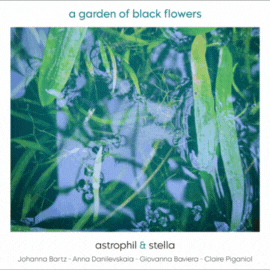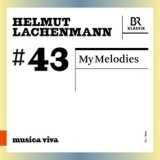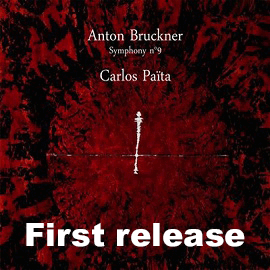Kunst als Idylle wird man bei Helmut Lachenmann nicht finden. Und insofern führt auch ein Titel wie My Melodies eher aufs Glatteis als zum Ziel. Über fünf Jahrzehnte dauerte es, bis Lachenmann diesen Begriff, den sein Lehrer Nono abgelehnt hatte, verwenden konnte. Und noch mehr, es geht um den Umgang mit melodienartigen Gebilden, nicht um sie selbst. Können auch Pauken oder Geräusche eine Melodie formen? Wie sang schon Frank Sinatra: I did it my way. Und so könnte man auch die Herangehensweise von Lachenmann verstehen.
Acht Hörner kann man Unisono und auch total aufgespalten hören. Und zwischen Teilklängen wie Zwei- oder Vierklängen auch Geräusche wahrnehmen. Die Version 2023 ist gegenüber der von 2018 um 77 Takte erweitert. Beeindruckend auch die im Beiheft angezeigte Liste der Instrumente des Schlagzeugs.
Von Energie überbordende Passagen, dann wieder innehaltende Momente in Selbstreflexion wechseln sich ab. Schwebungen, Flatterzungen und Luftgeräusche sowie Mikrotonales kann man mit Hörnern und anderen Bläsern erreichen. Atem- und Zischgeräusche sowie andere tonlose Klänge bei den Blasinstrumenten spielen eine besondere Rolle. Das Orchester bleibt dagegen fast konservativ, im bekannten tonalen System. Signifikant für den Komponisten ist, dass mehrere erkennbare Prozesse gleichzeitig ablaufen. Immer wieder neue Spieltechniken schaffen vielfältige Erweiterungen des klanglichen Repertoires. Wer Angst hat, dass er das alles nicht heraushören kann, sollte entspannen. Um die Geräuschdialoge zu genießen, reicht offenes Hören völlig aus. Was oder wieviel all dessen ist Melodie? Es bleibt ein Abenteuer, dem man mit Neugier begegnen sollte.
Ergänzt wird der dreiviertelstündige Konzertmitschnitt durch Ausschnitte mit Anmerkungen im Beiheft, die das Hineinhören unterstützen und ein Interview mit Lachenmann.
Die Hornisten des Symphonieorchesters des Bayerischen Rundfunks mit einem Gast hatten als eingespieltes Team trotzdem keine einfache Aufgabe zu lösen, aber die Gemeinsamkeit schuf eine gegenseitige Sicherheit, die die Umsetzung erleichterte.
Zusammen mit ihren Kollegen vom Symphonieorchester des Bayerischen Rundfunks unter Leitung von Matthias Hermann haben sie die erweiterte Version wie schon die von 2018, damals mit Peter Eötvös als Dirigent, mit Neugier und exquisitem Können übernommen. Die in Jahrzehnten mit musica viva erfahrenen Musiker, ob Solisten oder Ensemble, lassen diese Musik mit einer Selbstverständlichkeit aufleben, obwohl sie sicher nicht unterfordert sind, dass es eine reine Freude ist.
Ich habe Lachenmann Aufnahmen in Erinnerung, die mich als Hörer stärker herausgefordert haben. Aber vielleicht macht es auch die Übung des Hörens. Oder kommt etwa doch ein Hauch Melodien durch, einfach so? Gleich noch mal reinhören.
You won’t find art as an idyll with Helmut Lachenmann. And in this respect, even a title such as My Melodies is more likely to lead to a slippery slope than to the goal. It took Lachenmann more than five decades before he was able to use this term, which his teacher Nono had rejected. And what’s more, it’s about dealing with melody-like structures, not about them themselves. Can timpani or noises also form a melody? As Frank Sinatra sang, I did it my way. And this is also how one could understand Lachenmann’s approach.
Eight horns can be heard in unison and also completely split up. And noises can also be perceived between partial sounds such as two or four tones. The 2023 version is 77 bars longer than the 2018 version. The list of percussion instruments shown in the booklet is also impressive.
Passages overflowing with energy alternate with moments of pause and self-reflection. Floats, fluttering tongues and air noises as well as microtonal sounds can be achieved with horns and other wind instruments. Breathing and hissing noises as well as other toneless sounds in the wind instruments play a special role. The orchestra, on the other hand, remains almost conservative, in the familiar tonal system. Significant for the composer is that several recognizable processes take place simultaneously. Constantly new playing techniques create diverse expansions of the tonal repertoire. If you are afraid that you won’t be able to hear it all, you should relax. Open-minded listening is all you need to enjoy the sound dialogs. What or how much of it is melody? It remains an adventure that should be approached with curiosity.
The three-quarter-hour concert recording is supplemented by excerpts with annotations in the booklet to aid listening and an interview with Lachenmann.
The horn players of the Bavarian Radio Symphony Orchestra with a guest nevertheless had no easy task to solve as a well-rehearsed team, but the commonality created a mutual security that facilitated the realization.
Together with their colleagues from the Bavarian Radio Symphony Orchestra conducted by Matthias Hermann, they have taken on the extended version with curiosity and exquisite skill, as they did in 2018, when Peter Eötvös was the conductor. The musicians, whether soloists or ensemble, who have decades of experience with musica viva, bring this music to life with a naturalness, although they are certainly not underchallenged, that it is a pure joy.
I remember Lachenmann recordings that challenged me more as a listener. But perhaps it’s the practice of listening that does it. Or is there a hint of melody coming through, just like that? I’ll listen to it again soon.

























